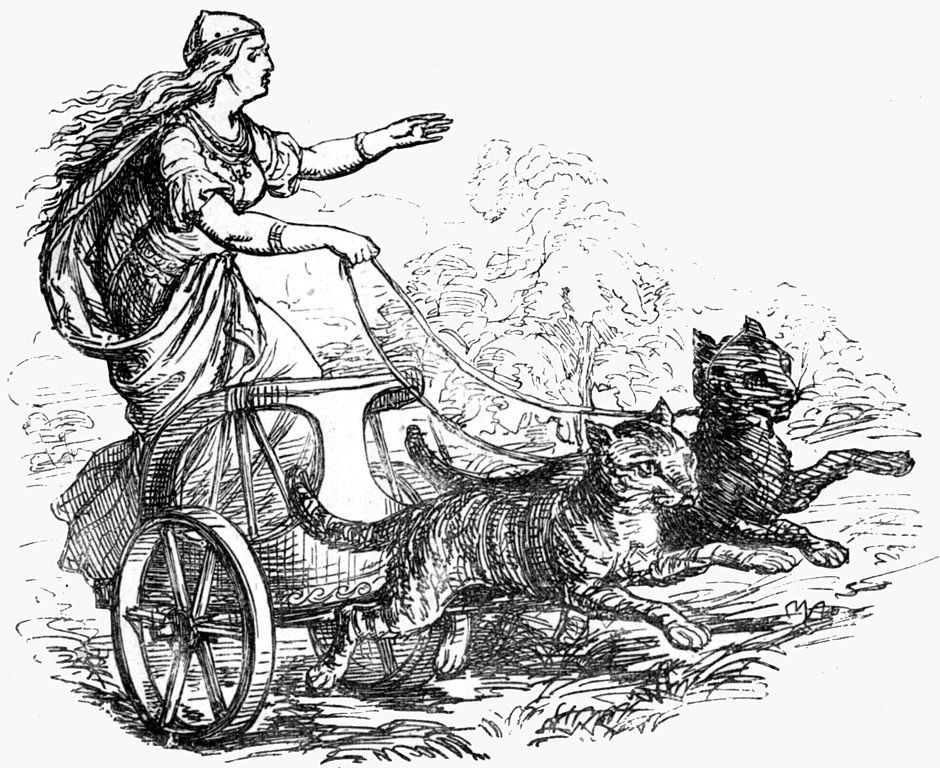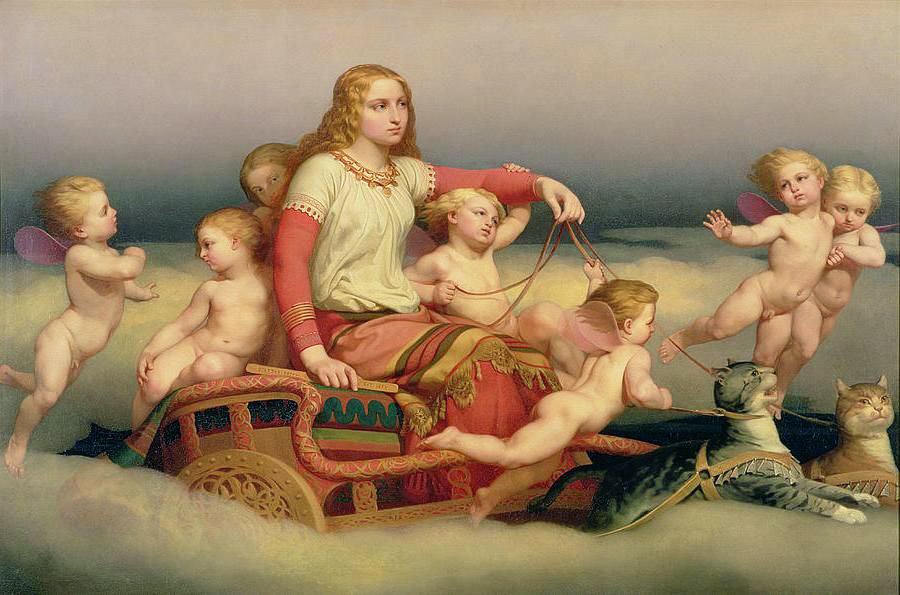Freya was one of the most influential and powerful Goddesses in Norse Mythology. Daughter of the sea god Njord, Freya was a fertility goddess also associated with love, womanhood, battle, and death. One of the most popular images of Freya depicts her on a chariot being pulled by two male cats, named Bygul and Trjegul.

Legend has it that following a fierce battle, Freya, the Norse goddess of love, beauty, and fertility, would ride alongside a group of Valkyries to collect the fallen warriors. However, it was said that Freya would only claim half of the fallen, while the other half would be taken by Odin, the Allfather and god of wisdom and war. Freya would bring her share of brave warriors to Folkvang, her majestic hall in the realm of the gods.
In addition to her role in gathering fallen warriors, there is speculation that Freya also played a significant part in welcoming deceased women into the afterlife. As a goddess associated with both love and death. her compassionate presence may have comforted and guided women on their journey beyond mortal life.
What Were the Names of Freya’s Cats?
The names of Freya’s cats were Bygul and Trjegul. Sometimes, they are also referred to as Brundr and Kælinn. However, neither of the cats who pulled Freya’s chariot had a name mentioned in the Norse sources.
The names Bygul and Trjegul were modern inventions by the American author Diana L. Paxson added in her book Brisingamen.
The only mention of Freya’s cats in Poetic Edda by Sturluson Snorri is in Gylfaginning, “Her hall Sessrúmnir is great and fair. When she goes forth, she drives her cats and sits in a chariot.”
How did Norse Goddess Freya Get Her Cats?
In a Russian tale inspired by Norse mythology, an intriguing story unfolds about Freya’s beloved cats, which were bestowed upon her as a gift from Thor. It all began when Thor, while fishing, was enchanted by a captivating melody that lulled him into a deep slumber. His peaceful rest was abruptly interrupted by a horrible noise. Annoyed, he set out to discover the source of the commotion, leading him to a magical creature known as Cat Bayun and his two enchanting blue kittens.
As Thor inquired about the kittens’ parentage, Cat Bayun revealed that he was their father. He recounted a tale of encountering a charming female cat in the spring, resulting in the birth of these precious kittens. However, their mother abandoned him, leaving him to fulfill the role of a single father. Recognizing the cat’s plight, Thor empathized with his situation and devised a plan to assist him. He suggested that the kittens be gifted to Freya.
Cat Bayun then morphed into a bird and soared into the sky. Meanwhile, Thor gathered up the kittens and embarked on a journey to present them to Freya. Over time, these adorable kittens flourished and grew into magnificent cats that pulled Freya’s chariot.
Attributes
The feline companions of Freya were known for their unwavering loyalty and are often depicted in shades of blue or gray in color, depending on the source. These mystical cats embody qualities of strength, protection, and unwavering faithfulness.
Legend has it that during the Viking era, there existed a unique custom of presenting kittens to newlywed couples. These precious feline gifts were bestowed upon the bride, symbolizing the blessings and divine presence of Freya.
Were They Actually Cats?
In the realm of historical scholarship, there has been an ongoing debate regarding what type of creatures pulled Freya’s chariot. The discussions surrounding the species of Freyja’s draught animals spanned from around 1829 to 1870. The origins of this argument can be traced back to the Old Norse sources themselves, and it is possible that the discovery of a Gallo-Roman statue depicting a bear goddess in Switzerland in the early 1830s influenced the debate.

While most scholars lean towards the belief that cats were the chosen animals, the definitive answer remains elusive due to the ambiguity in the sources. Interestingly, this topic gained significant attention among Eddaic scholars during the mid-19th century. Despite the ongoing discourse, artists throughout this scholarly period continued to portray Freya with a chariot drawn by cats, implying that the theory suggesting bears as animals was not widely embraced.
